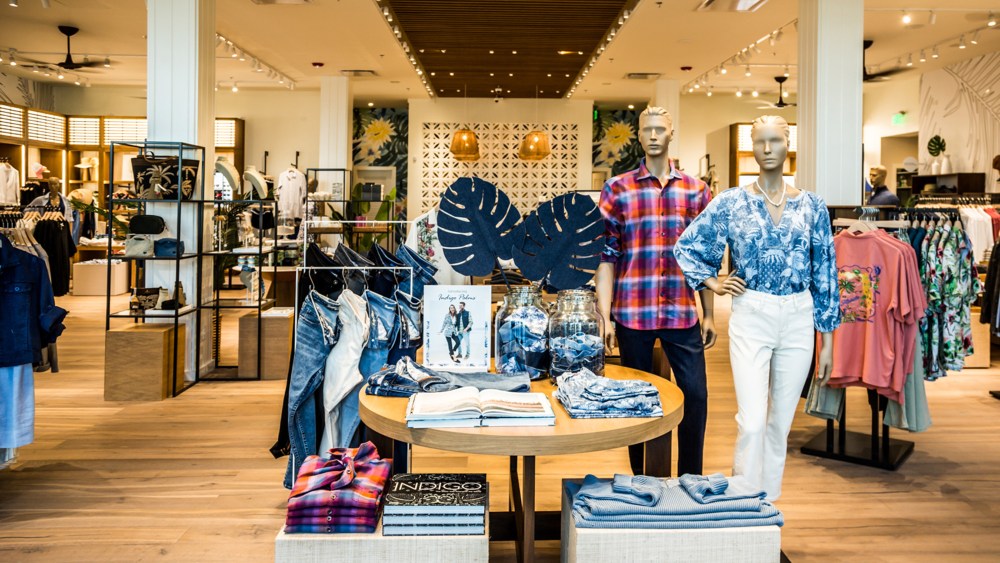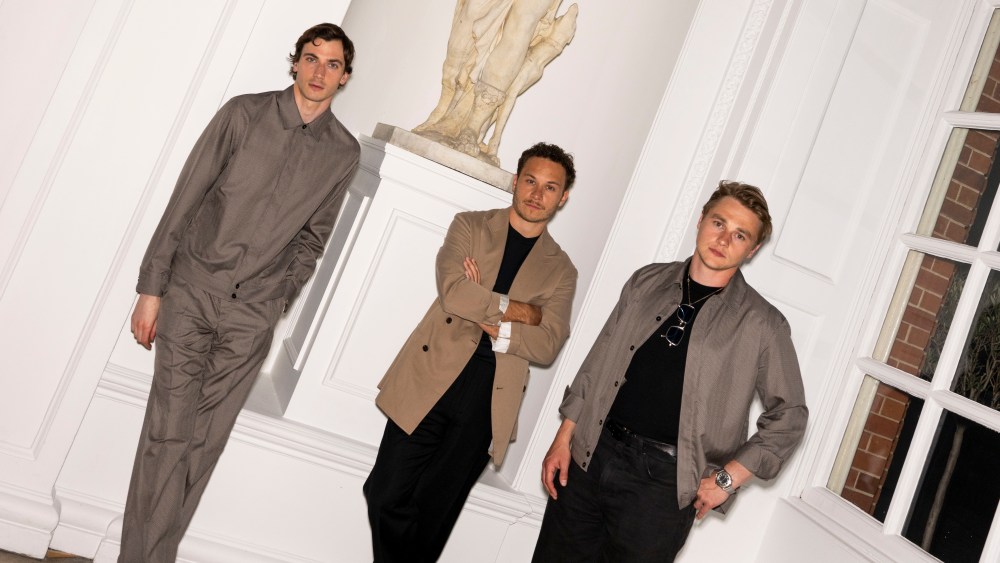WWD rounded up a cross section of key men’s executives to offer insight into the challenges and opportunities they’re facing in 2025. Here’s what they had to say:
WWD: What are the biggest challenges you’re facing in 2025? Is it the threat of tariffs?
Dan Orwig, president, Peerless Clothing: Every year presents its own set of challenges, and this year is no different. Tariffs remain a significant concern, but we are taking a measured approach in response. Rather than overreacting, we are proactively managing our supply chain to minimize any potential impact. Our supply is adaptable and we are prepared to adjust as new developments arise. Additionally, there are concerns regarding a potential port strike in January, which could lead to delays of spring product as ports get backed up and as importers explore alternative ports to redirect containers. We are closely monitoring the situation to ensure we stay ahead of any disruptions.
Doug Wood, chief executive officer, Tommy Bahama: As is always the case with Tommy Bahama, our biggest challenge is how do we excite our guest with great new product for both men and women. We have found that it’s best to focus on the things we can control, and that is what we want to stand for in 2025. We won’t disappoint our guests in 2025 because we have some amazing new items coming in for spring. We have managed through tariffs before and in the short term it definitely causes challenges. However, we will continue to focus on those things we can control and in the long run, we will manage and grow the brand profitably.
Andrew Berg, president, Robert Graham: Tariffs certainly present a potential challenge for our brands and the industry at large, and we are carefully monitoring the evolving landscape. Thanks to our proactive diversification of sourcing strategies in recent years, we are well positioned to navigate any potential disruptions. By leveraging the extensive relationships and expertise of our parent company, Centric, we continue to uncover opportunities and secure more favorable terms. As a result, we remain confident in our ability to uphold our commitment to delivering exceptional craftsmanship and unparalleled value without passing increased costs onto our customers. As we enter 2025, we’re laser-focused on the evolving premium consumer — adapting to nuanced spending, shifting lifestyles, and higher expectations for seamless, omnichannel service. Shoppers move fluidly between digital and physical platforms, as well as full-price and off-price channels, demanding a cohesive brand experience at every turn. To excel in direct-to-consumer, brands must unify the customer journey by optimizing inventory, integrating data-driven CRM, and delivering robust clientelling. We plan to achieve this through advanced analytics, real-time inventory management, personalization, and the human touch that keeps our brand connection strong.
Nate Checketts, CEO, Rhone: Tariffs are expected to have a minimal impact on our business, affecting only a small portion of our operations. As we navigate this evolving landscape, our priority remains clear: delivering exceptional value and service to our retail partners and customers.
Arnold Brant Silverstone, president and chief creative officer, Douglas Hayward: I would say 2025 will be full of changes in government, possibly including tariffs, and each new administration, regardless of party, brings with it changes in economic conditions and the mood and style of the consumer. So our challenge is to stay on top of these changes and be a leader by staying ahead of them. As a progressive state-of-the-art British brand, we are poised to do just that. We see minimal increases in prices to our customers due to our unique U.K. sourcing. When it comes to some of our outsourced product, like sportswear and shoes, we have many good alternatives, depending on any possible tariff changes. We need to be on our toes to stay ahead competitively.
WWD: What impact will the merger of Saks and Neiman’s have on the business? With fewer and fewer large stores, are you doubling down on independents? How is that impacting how you operate your business?
D.O.: We built our business with independent stores, and they remain an integral part of our success. However, the majority of our business now comes from department stores. Our focus is on maximizing our presence within these stores through strong partnerships with best-in-class brands. We are committed to providing end-to-end solutions for the tailored clothing category across all our department store partners. We believe that by combining our exceptional service and quality with the world’s top brands, we can continue to grow our market share and build on our success.
D.W.: The Saks/Neiman’s merger has no impact on Tommy Bahama. Wholesale is and always will be an important part of our business. Department stores and specialty stores that are interested in building full-price businesses without promotion will always be our priority. Our goal is to let the guest decide where they want to interact with the brand. That might be at Dillard’s, a local specialty store, or a Tommy Bahama store. Our job is to ensure that the design and quality of the product always exceeds the expectations of the guest.
A.B.: We have enjoyed long-standing and successful partnerships with both Saks Fifth Avenue and Neiman Marcus, and we look forward to strengthening these relationships post-merger. We believe that the newly formed company under Saks Global will emerge stronger and more strategic, creating opportunities for our brands to not only maintain their presence but also to elevate their impact through more compelling brand installations and presentations. Our strategy has always prioritized a balanced distribution model across direct-to-consumer, department stores, and independent retailers, ensuring resilience and adaptability in a dynamic market. As we move forward, we remain committed to this approach as we strengthen our omnichannel DTC capabilities, and maintain/build relationships with wholesale partners that share our dedication to quality and high-touch clienteling.
N.C.: At Rhone, we are proud of the strong wholesale partnerships we’ve built. While we are aware of shifts in the retail landscape, we are confident in our ability to adapt and thrive. As a DTC brand, we have traditionally focused on direct e-commerce sales. While direct e-commerce sales are still a big part of our business, we’re also investing in a diversified omnichannel strategy, focusing on brick-and-mortar locations and strategic wholesale partners. These investments are thoughtful, extending beyond simply selling products and serving as community hubs and bolstering brand awareness that will allow customers to experience Rhone across multiple digital and physical channels. Rhone sees physical retail stores as more than a place to shop but a community hub used to foster and develop relationships with customers through events like Rhone’s signature Mind & Muscle, fostering a synergistic environment where physical and mental well-being converge. We’re thrilled to announce several exciting store openings planned for the coming year, including The Mall at Short Hills, Short Hills, N.J.; The Shops at Merrick Park, Coral Gables, Fla.; Coulter Place at Suburban Square, Ardmore, Pa.; Lincoln Park, Chicago, and International Plaza, Tampa. At the same time, Rhone is significantly growing its presence in major retail stores, specialty stores and gyms. These wholesale partnerships are not only a sales revenue but also important for increasing brand awareness and breaking into new markets by meeting the customer where they already are. Some retailers include Dillard’s, present in 185 doors across the U.S.; Nordstrom, increasing from 39 to 70 doors this year; Bloomingdale’s, present in 16 doors; more than 150 top-tier accounts in golf and resort locations, and 59 premier gyms, including F45, Equinox, SoulCycle, LifeTime and Barry’s Bootcamp.

Kevin Love of the Miami Heat is a Rhone ambassador and the face of the company’s NBA campaign.
Courtesy of Rhone
A.B.S.: Our focus has been the independent stores and a handful of better majors like Nordstrom. Hopefully the consolidation of Saks and Neiman’s will make them stronger and a good contender for our brand.
WWD: What are the key fashion trends that will impact the men’s market in the first half?
D.O.: The first season of the new year will be spring 2025, and it’s closely tied to changes in silhouette length and shape. Suit jackets are slightly longer, offering a balanced contrast to the more open silhouettes from the previous season. These jackets are paired with wider, barrel-legged trousers for added comfort. Sartorial details continue to play a crucial role, such as high-waisted pleated pants and wider lapels, which serve as a modern nod to classic styles. A homage to prep style, exemplified by the traditional rowing blazer, will be popular. Classic black remains a key color for special occasion fashion, while new silhouettes, like the one-button crossover blazer, are set to become staples for special occasions moving forward. Performance features and comfort are still top priorities for core fabrications, complemented by knit models throughout the collections. Double-breasted suits and sport coats continue to hold appeal, and relaxed fits are steering customers away from the skinny fit that dominated fashion in recent decades.
D.W.: In menswear we are continuing to move toward comfort, style and technical properties in product. Whether the product is dressy or casual, the guest wants that product to stretch, breathe and fit in a way that provides comfort and style. At Tommy Bahama we are fortunate to have dynamic design and sourcing teams that have moved the brand forward for men by addressing all aspects of his needs.

A look from Robert Graham.
ORIANA LAYENDECKER
A.B.: Menswear in 2025 will remain heavily influenced by the enduring trend of quiet luxury, or what we call “quiet confidence.” This relaxed yet refined aesthetic emphasizes versatile designs paired with sophisticated materials and silhouettes. Texture and surface interest across fabrications will play an increasingly vital role as brands and retailers seek to elevate tonal looks with subtle depth. Meanwhile, personalization and limited-edition pieces will gain prominence, offering consumers a unique sense of exclusivity and individuality.
N.C.: We’re less about following trends and more about staying true to our mission of championing mental fitness and delivering performance-driven apparel of exceptional quality. That said, we see a continued emphasis on versatile, functional clothing that transitions seamlessly between work, workouts and leisure. Consumers are increasingly prioritizing quality and our focus remains on meeting that expectation through thoughtfully designed, high-performing products that inspire confidence and well-being in every aspect of life.
A.B.S.: I think we will see the continuation of the strong items of the past couple of seasons: jackets, from tailored to shirt jackets and everything in between; interesting trousers; made-to-measure suits; formalwear; cool sportswear; innovative tech outerwear, and fresh cool shoes — the white sneaker has been done for too long. As the consumer goes back in the office and tires of fast-fashion, I believe the consumer can appreciate well-made menswear that is innovative and luxurious at fair price points and they will invest in better product.
WWD: Is anything else top-of-mind for you as you look forward to 2025?
D.O.: We believe there is strong momentum coming out of the holiday season, with consumers showing optimism and excitement. While there will always be headwinds, we feel confident that “dress-up” is still a trending category. We are in a great position to support our retail partners by offering the right balance of core and fashion styles, ensuring that we keep the consumer engaged and shopping.
D.W.: I am excited for 2025, especially spring. We have so many new programs in polos, shorts and shirts, that this is going to set the stage for the next couple of years. This is following up on our successful Indigo Palm denim launch this fall, so it should be a great year.
A.B.: As we celebrate 25 years of Robert Graham and 50 years of Avirex, innovation in artful design remains at the heart of everything we do. We are doubling down on exclusivity through our “1-of-1” creations, offering collectors truly unique, limited-edition pieces. At the same time, we are embracing trends that keep our brands relevant in the marketplace while staying true to our DNA. On a macro level, we are utilizing AI and digital innovation to deliver hyper-personalized experiences while ensuring technology enhances rather than replaces authentic human connections. This balanced, customer-centric approach allows us to deepen relationships with our longtime “collectors” and warmly welcome those new to the brand.
N.C.: As we look toward 2025, Rhone remains deeply committed to its mission of championing mental fitness through our meaningful partnerships with organizations like the NBA and LPGA, which are a testament to this mission, allowing us to drive meaningful conversations and initiatives that prioritize both mental and physical well-being. These partnerships, combined with our focus on delivering performance-driven, high-quality apparel, position us to continue making a positive impact and inspiring confidence in our growing community.
A.B.S.: I think the customer is still somewhat price sensitive due to the high inflation of the past couple of years — which stubbornly continues today. So my challenge is to bring beautiful product at a fair price. I think the days of high prices for clothing with little value are behind us.




